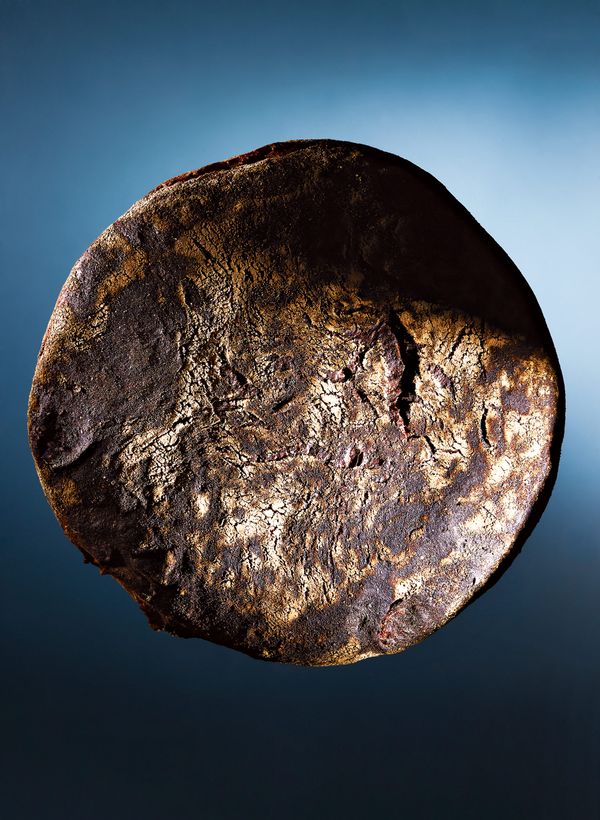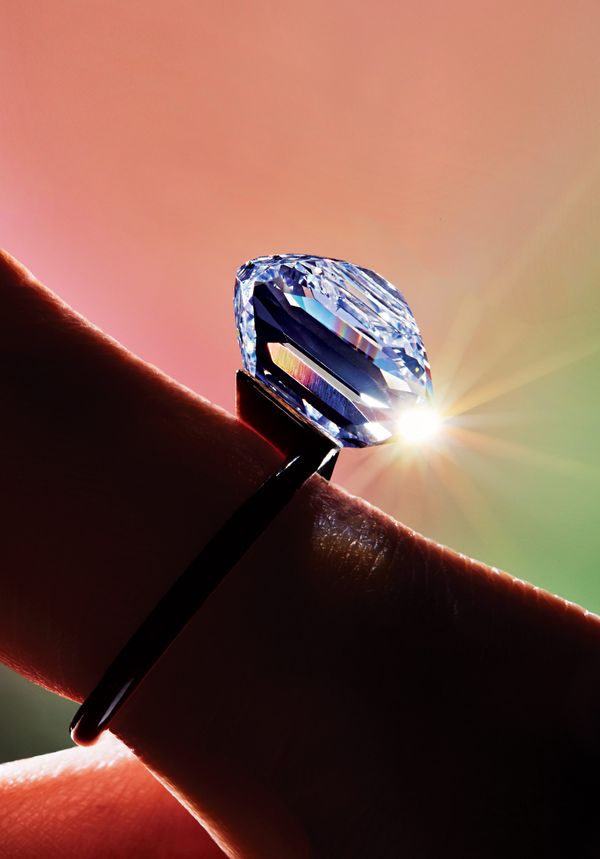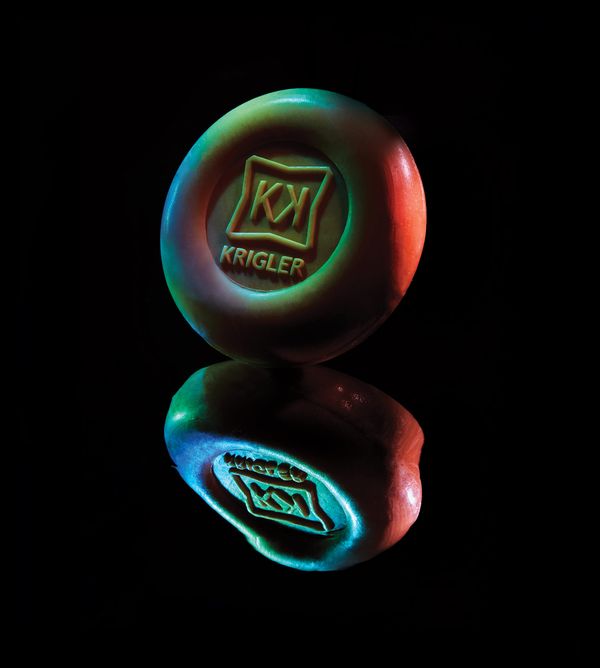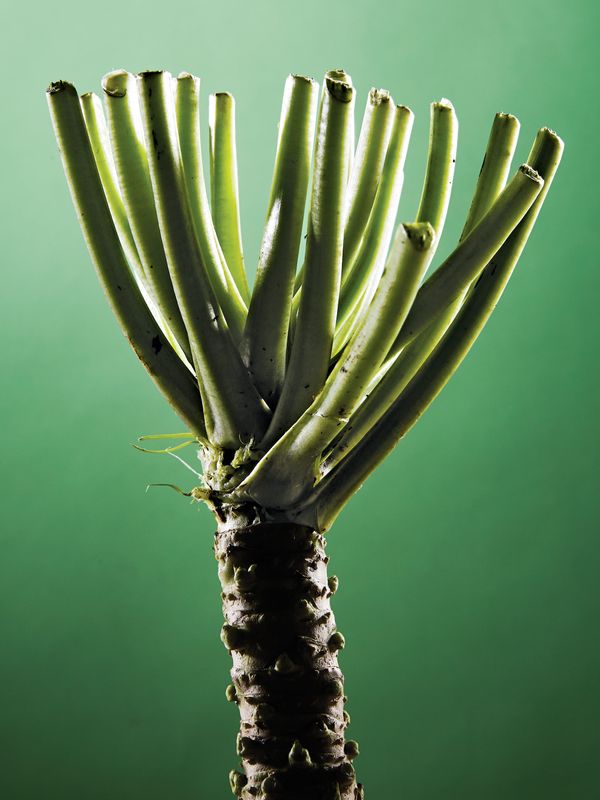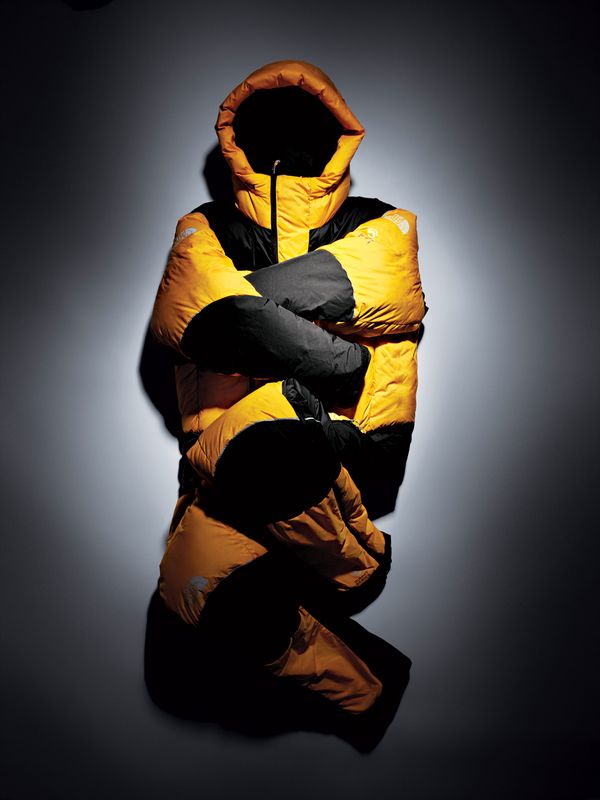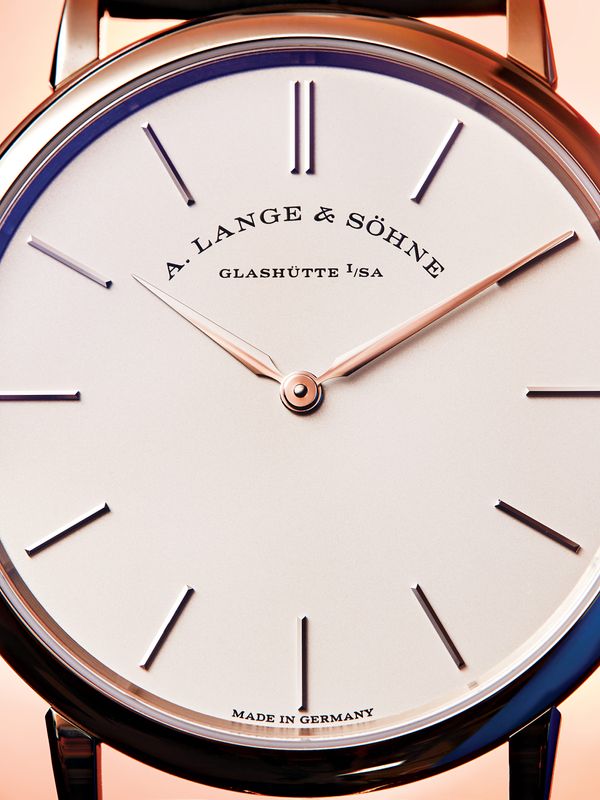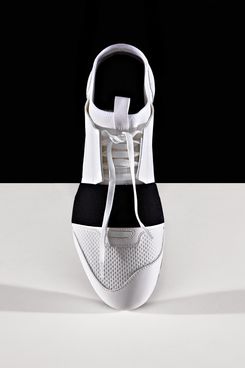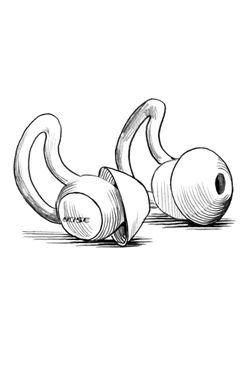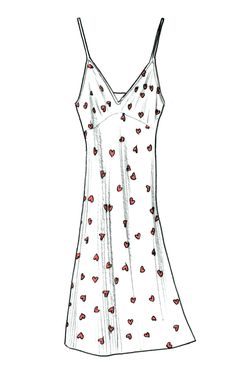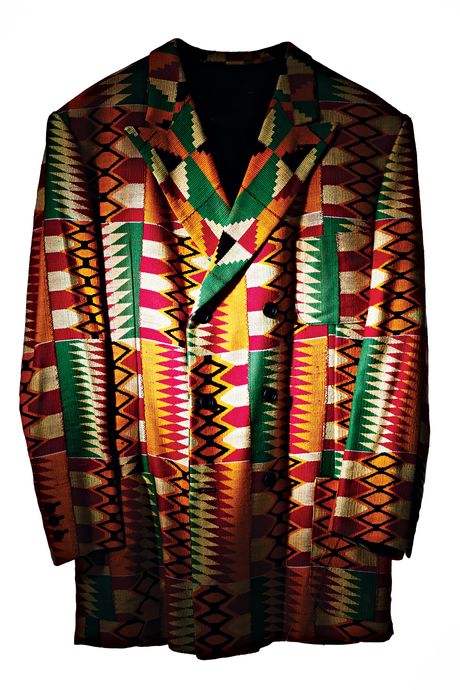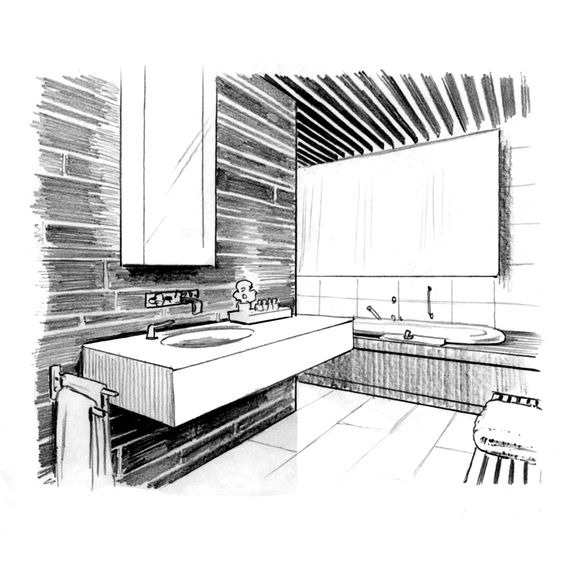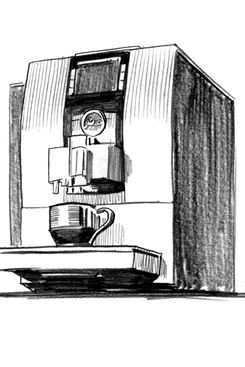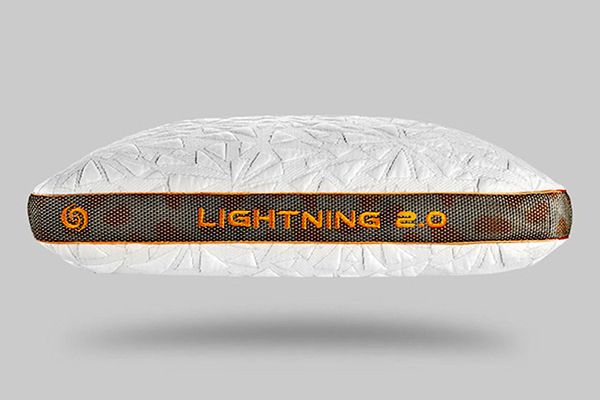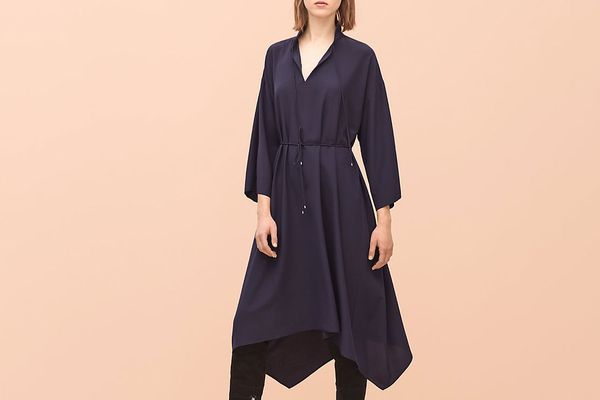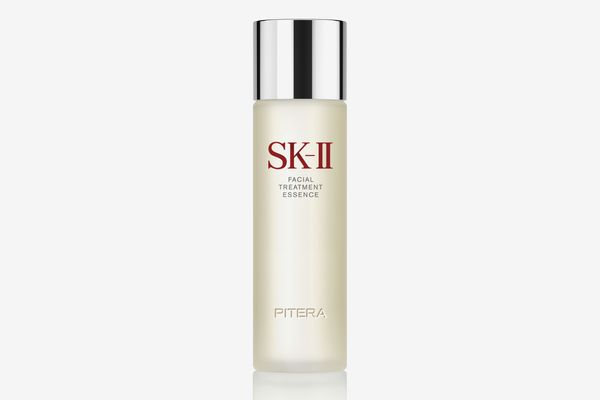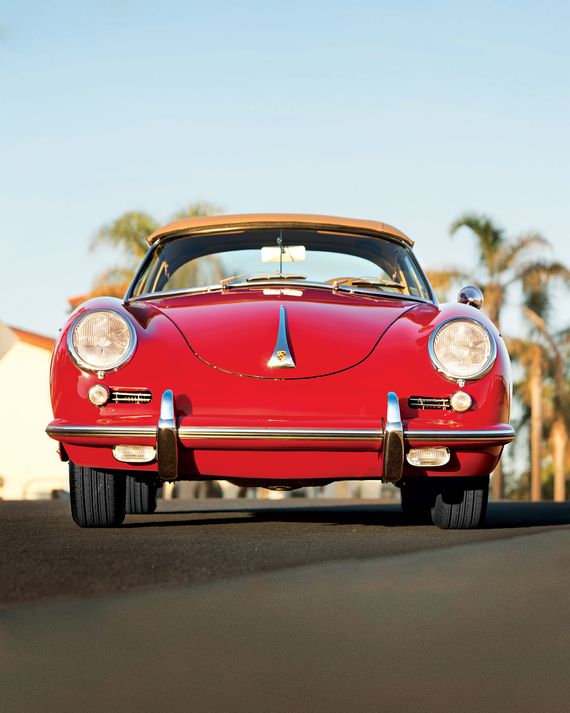
Expensive things are sometimes things we come to regret. Other times, though, years later, they are the things that one feels wisest about having sprung for. What is it that makes such pieces truly worth it? Perhaps it’s the pure, decadent indulgence of the items — only trotted out for the most special of occasions. Perhaps it’s the knowledge that even the most ephemeral of such pleasures will endure in one’s memory. Sometimes it’s more quantifiable: knowing that you have used/worn/wrapped yourself in/inhaled this pricey thing so many times, and will use it so many more, that it has paid for itself five, ten, 100 times over.
The $22 Loaf of Bread
By Rob Patronite and Robin Raisfeld
Yes, She Wolf Bakery’s miche can be purchased by the $5 quarter-loaf. But we say forget practicality and surrender to the aesthetic allure of the whole supercolossal four-pound wheel. It’s bread as symbol of abundance and generosity and a testament to the baker’s craft. And a bigger loaf means bigger flavor and a longer shelf life. We love the faint but persistent sourness of the moist crumb, contrasted with all those toasty, caramel-y, nutty, Maillard-reaction flavors of the crackly crust; the resounding crunch when you take a serrated blade to the 18-inch diameter; the edible link to an old-world tradition that extends back centuries. How can something made up of only flour, water, salt, and natural leaven cost that much? In fact, fewer ingredients (like freshly milled Farmer Ground flours) often lead to better bread. But mainly it’s technique and the luxury of time. The whole She Wolf dough-making, shaping, fermenting, and general babying process takes over two days; you don’t so much bake this miche as go into labor and give birth to it. So yeah, spring for the whole hubcap-size loaf. Put it out on the buffet like a work of art. Inhale its deep grainy fragrance. Revel in its complexity of flavor. Buy a hunk of French Comté, some good butter. Invite friends.
The 6.99-Carat–Diamond–and–Ceramic Taffin Ring
By Claudia Mata
I covered jewelry as an editor in New York for over 12 years, which means I’ve seen many, many beautiful things. But now that I’m removed from it all (I left for Northern California a couple of years ago), James de Givenchy’s pieces are the ones I go back to. He would save a stone for years — like, 20 years in the safe — until he felt it had the right life for itself. What I like about the ceramic element is that it adds a bit of whimsy to a piece of jewelry that would otherwise be so serious — you have a major stone paired with something that’s a notch or two down. But they still feel timeless to me: I’ve sent friends to get wedding rings from him. It’s hard for me to say that the value of something that is worn on a hand is worth the price of someone’s home. But looking at it for what it is — from my years of being in the industry, from knowing what it takes to create it, the rarity of the stone itself, the clarity, how it’s cut — well, you can see why it costs so much. Sometimes I wonder why it doesn’t cost more.
The $38 Krigler Soap
By Molly Young
Nobody needs fancy soap. Soap has one job, and most will do that job. Spending $38 on a small orb of soap is not, therefore, something I endorse — unless you repurpose it into something much more valuable. Let me explain.
A year ago, I bought a $38 soap from an old perfume company called Krigler. Krigler is known for heady, high-quality, smell-it-from-across-the-room scents. But instead of using my soap for its intended ephemeral purpose, I dropped it into my lingerie drawer to scent my delicates. Wrapped in its original plastic, the soap emitted a strikingly lovely smell that permeated my underthings. It was like an old-fashioned sachet on meth. I expanded the soap’s itinerary through all of my dresser drawers. In turn, my clothes no longer smell like detergent but instead bear notes of neroli and jasmine. A year’s worth of aromatic pants sounds like something an unreasonable billionaire might demand — yet Krigler soap can be ordered online on a mere thousandaire’s budget.
My scent of choice is English Promenade 19, which smells like a garden at dusk. You may prefer one with woodsy vetiver or a sultry black-tea profile. Be careful in your selection — the soap lasts forever. I’ve had mine for a year with no diminishment in scent properties. Amortized, this comes to around ten cents a day for ongoing blissful aromatics. What else can you buy for a dime these days?
The $70-Per-Half-Pound Wasabi
By Hugh Merwin
Years ago, on thanksgiving, my father fell and broke his hip minutes before the meal was scheduled to start. Family members dispersed as soon as the EMTs drove away. I threw a midnight dinner party to deal with the mountains of food, and because I was a line cook, my replacement guests were all industry people. One had a knob of fresh wasabi — he’d spared it from his restaurant — and grated it over the dark meat.
Fresh wasabi rules. The rhizome (the plant’s root) exudes a groundswell of isothiocyanates, the compounds that storm nasal passages with wonderful, prickly heat. By comparison, standard-issue wasabi doled out in pasty blobs is really just powdered horseradish with a bad dye job.
The sort of Very Informed Person who extols deluxe A5 Wagyu may suggest that Shizuoka prefecture — wasabi’s Japanese birthplace — produces the freshest, but West Coast–grown varieties are the perfect foil for king crab or even mashed potatoes. A few ounces is enough for a 20-pound salmon, which might be an inconvenience to butcher, unless, of course, a bunch of sushi chefs show up unexpectedly on your doorstep.
The $1,000 North Face Himalayan Suit
By Jessica Silvester
Not long after the birth of my child, I learned that if I ever again hoped to have any time to myself, beyond the walls of the diaper-exploding apartment, it would have to be in the early morning. I began to take walks along the Hudson River greenway at 4 a.m. As the temperatures plummeted, so too did my hopes of maintaining this meditative ritual. That is, until I had the chance to interview a landscape painter named Ellen Altfest. She told me about her beloved Himalayan Suit, and how its 800-fill goose-down insulation served to make a February cold snap feel like an autumn afternoon. She also revealed that it costs nearly $1,000. I could not justify such an expense — my job did not require me to be in, say, a subzero forest painting lichen. My new job, though — keeping another human being alive — did demand that I keep a clear head.
On a hormone-induced whim, I bought the suit. And as I continued to get out the door every morning despite the ever-lower digits on my weather app — 23, 17, minus 4 — the purchase seemed less and less insane. Of course, I looked crazy. Even through my snorkel hood, I could see the weird stares. “She’s warm,” I could hear construction workers saying to one another near Chelsea Piers.
The $15,000 A. Lange & Söhne Saxonia Watch (With an Alligator Leather Band)
I hate putting on tuxedos, they make me look like a penguin imploded inside a hairy crêpe. But this super-elegant German watch is a freaking horological masterpiece: no frills, not even a seconds hand, just the hour and minute hands surrounded by a neat white-gold case. It makes dressing up worth the hassle. Now, what did I do with that cummerbund?
The $695 Balenciaga Sneakers
By Damon Young
Last summer, I watched the NBA Awards dinner as Kemba Walker of the Charlotte Hornets won the NBA Sportsmanship Award, given to the player who best “exemplifies the ideals of sportsmanship on the court — ethical behavior, fair play, and integrity.”
Walker wore a fitted gray suit with light checkers bordered by a slight baby-blue stitch and a black polo shirt buttoned to the top. On his feet were a pair of low-top bone-white sneakers. I thought he looked fresh as fuck.
Walker’s freshness solved two intersecting dilemmas I had. Months earlier, I’d bought a Lazio gray herringbone suit from Suitsupply similar in cut and fit to Walker’s, and I’d been curious how it would look with sneakers. Also, I’d been looking for a pair of sneakers that I could wear with a style of dress — trendy and practical airport/on a college panel/at a happy hour after the panel — that I’ve deemed “nigga casual,” something I could slip off when passing through airport security.
The next weekend, I drove to Ross Park Mall, a few miles north of Pittsburgh (where I live), in search of the right shoe. I parked outside Nordstrom, intending to pass through it before stopping at Foot Locker, maybe Macy’s. And then, well, remember in The Godfather, when Michael first saw Apollonia and was so captivated by her that his bodyguards claimed he was hit by a thunderbolt? That’s what happened when I laid eyes on the Balenciaga Race Runner at Nordstrom. It looked like something from the future. But not a Mad Max future. More like a Minority Report future. A future where Tom Cruise is still running.
I inspected the shoes like a butcher vetting a porterhouse. I even sniffed them, as if that fucking mattered. After the shoes had met my arbitrary olfactory standards, I asked a salesman if he had my size (11). Once I put them on, I officially moved from merely “captivated” to “Holy fucking shit, where have you been my entire life, you devil sneaker with a name I can’t even pronounce?” I hadn’t looked at the price yet. I hadn’t even heard of Balenciaga until that day, but I knew that the Venn diagram of “brands I’ve never heard of” and “sold at Nordstrom” and “roughly the price of a kidney” is a perfect circle, and I just didn’t want to scare myself away. But I had to look. So I did: $695.
You know how, on some sitcoms — let’s just say Roc or The King of Queens — the penny-pinching dad/husband will hear the extravagant cost of a thing and then start naming all the things he can buy with that money? (“A $17 burger?! At Jonny’s on the Ave., I can get two burgers, a steak, some tater tots, and an oil change for $12.99!”) That was me seeing that price tag. But they just felt and looked so damn good. “And,” I attempted to sway myself, “these would be my fancy airport/panel nigga-casual sneakers. Not my Pittsburgh sneakers. It’s a mature and appropriate investment, Damon.”
I bought the shoes and don’t have any regrets. They’ve been a welcome addition to my wardrobe, and I’ve lost count of how many people ask me about them when I’m wearing them. They look good with the gray suit, with jeans, with sweats, with the above-the-knee shorts I wear to cookouts and rib fests, with hoop shorts when I’m going to CVS and pretending to get captured by paparazzi. I even have a guy I go to who specializes in kidney-priced sneakers and cleans them. I’ve always wanted to have a “guy,” though I think I enjoy saying “I have a guy” more than actually having a guy.
Still, I’m urged sometimes — particularly when watching the Hornets — to invoice Kemba Walker. This is all his fault. And I’m sure he can afford it.
The $250 Bose Noise-Masking Sleepbuds
By Caitlin M. O’Shaughnessy
These buds are particularly outstanding for travel — recently, while sharing an Airbnb loft with a friend who had a 2:30 a.m. conference call with her Hong Kong team, I marveled at my ability to block out any negotiations. But, as they say, that’s not all: Their rechargeable battery lasts up to 16 hours, and their case (with magnetic inserts) makes them easy to keep track of. The Bose Sleep app is a little clunky but does the trick; with a few taps, I can choose among ten noise tracks. And if you’re sharing the bed with an equally light sleeper, you can wake up guilt-free to an alarm that only you can hear. Once you’ve gotten over the sticker shock, you’ll throw out your foam earplugs and wonder how you ever slept without them.
The $800 Cat Tree
By Karen Adelson
Like most cats, my two tabbies are relatively low-maintenance creatures — besides some irritating behaviors that remind me they aren’t too far removed on the evolutionary chain from their feline ancestors. These include their natural desire to perch at high elevation, such as on the edge of my shelf full of easily shattered wineglasses.
I’ve bought multilevel cat trees at big-box pet stores before, which the cats have used, but their ugly beige carpeting and cardboard, which ended up strewn across the floor, left much to be desired. I first discovered Pet Tree Houses in the pages of Cat Fancy — yes, I was a longtime subscriber of a feline-dedicated monthly — and learned that they’d won the magazine’s editors’ choice six times. Further research revealed that the trees are handcrafted by a woman named Shelley DelRocco and her husband, Joe, who closed his home-building business to devote his talents to cat habitats full time.
Upon the arrival of my six-foot-tall, four-story Sycamore model, I could see why the trees consistently got top honors. Made from materials (cedar, oak, and silk) that would be at home in a West Elm catalogue, it looked pleasingly in line with my other furniture.
The true test was whether the cats liked it. They did: They began scratching it immediately and continued contentedly for hours. It’s a statement piece, for sure — a friend asked where I got the “cat condominium” — but the joy it brings my tabbies and the order it has restored to my living room means everyone is happy.
The (Bought for $30,000, Now Worth $250,000) Vintage Porsche Roadster
By Adam Wright
In the waning days of my publishing career, I started making money buying and selling Porsches. I found this one — a 1960 Porsche 356B Roadster — on Staten Island. I’ve always had a special place in my heart for the Roadster — it’s a cousin of the iconic Speedster, which people like James Dean drove. But better: The Speedster is cool but hard to tour in because of its low-cut windshield. The Roadster has a taller windshield and roll-up windows. I couldn’t afford it, so my friend, who also traded Porsches, came and bought it instead. A couple of months later, he called to complain that he couldn’t sell it. I made him a deal: a Miami Vice–ish Porsche ’73 911S I owned, plus an undriveable Roadster I’d recently found in a guy’s backyard in Boston, for the red Roadster I’d wanted all along. I took it to my Porsche club, which I was very active in at the time, to show it off. My friend ended up making a fortune off the two I traded for it, but I didn’t care: I just wanted that Roadster. I still have it. And I’d never sell it. Unless, you know, one of my kids needed a kidney.
The $700 D. Porthault Nightie
By Sadie Stein
As if it needs saying, it was a low moment. Money was tight. This birthday money had been given to me to spend on practical stuff: insurance or travel to see my ailing parents. But from the moment my aunt handed me the check, I knew what it would go toward. I had been stalking the nightgown, you see, for weeks.
It was the simplest nightgown you could imagine: just the thinnest cotton voile. The cut was bias; the bodice was made up of a series of gentle tucks. If you looked at your hand from under the hem, you could still make out its gauzy outlines and fluctuations of color.
It was heart-printed — a print so girlie I would have disdained it even as a little girl. Yet somehow now its utter frivolity spoke to me: I only knew I craved it painfully and unwholesomely. The day I had the money in my hand, I rode the 6 train to the store. The whole shop smelled like freesia and steam. The nightgowns — along with their matching peignoirs — were on a rack along the right wall. There was only one I craved — the rest were too dowdy, too Blanche Devereaux — but how I did long for that one! I bought it without trying it on, explaining that, yes, it was a birthday present to myself. The hearts looked silly, but then, I felt a little silly. I was, after all, wearing a $700 nightgown, and yet it seemed as durable a piece of chain mail as any.
Ed. note: The author’s original night gown is no longer available, but here’s a similar option.
The $2,000 Kente Cloth
By Andrew Solomon
Thirteen years ago, I attended the glamorous wedding of a beloved friend, the writer Nana-Ama Danquah, in Ghana. Nana-Ama arranged for one of her chic cousins to escort foreign wedding guests to Accra’s best dealer in kente cloth, a modest storefront behind which we examined an array of colored fabrics that would put any rainbow to shame. One of the largest pieces of cloth, made of silk and cotton, was the one with colors that sang to me; at $2,000, it was also one of the most expensive. Pink, green, yellow, and white, it fairly glittered on the counter. It had come from the Akan people of the Ashanti Kingdom. I dithered briefly, solicited comments from the other wedding guests, then decided to go for it. I knew that it and I had a future together, though I didn’t yet know what it was.
My husband, John, and I married in 2007; the celebration spanned four days. I had had my London tailor make the kente cloth into a double-breasted suit that I wore for the end of the festivities. The tailor had been bemused but accommodating. I had told him to treat it like a pinstripe, match where he could, and cut it like my other suits. I didn’t mind when friends laughed, then came closer and observed the elegant lines of it. It was bold and exuberant, and I felt bold and exuberant about our gay wedding. John and I were celebrating not only each other but a dawning liberalism in which our love could be recognized and sanctified, and the kente-cloth suit felt to me like an optimistic way to return to the world. We had invited our friends to bring their children to the wedding, and they flocked to me in my kente. I felt like the Pied Piper.
John wore white flannel pants and a pink shantung blazer and pointed out that only with me could he be so attired and yet the peahen in the relationship.
I waited for another occasion for the suit and finally donned it again when I was cast in an Elton John video four years later. Now I visit it every day in my closet, where it puts all the khaki and gray flannel to shame, and I await its next outing. It’s seldom appropriate, but when it is, it sings for its supper.
The $400 Thimble-Size Bottle of Oud
By Ashlea Halpern
At 80 bottles and counting, I have what you might call a modest fragrance addiction. But my favorite scent — the one I covet and hoard and pay ridiculously large sums of money for ridiculously small quantities of — is oud. Dark, syrupy, rich, exotic oud.
In its most basic form, oud is an aromatic resin scraped from a diseased tree. Depending on where that tree is grown (India, Cambodia, etc.), its bark goes by many names (e.g., agarwood, gharuwood, and jinko). The timber is among the most valuable wood in the world because of its rarity.
Oud has been used in religious ceremonies for thousands of years and is considered precious throughout the Middle East and Asia, worn by sultans and commoners alike. Although oud and its synthetic impostors are popular in designer fragrances like Tom Ford’s Oud Wood, their scent is muddied by other ingredients. I like my oud straight in all its roasty, toasty, spicy, stanky, rotting-woods glory. Some people consider the scent noxious or “too dirty” to wear in public. But find a good oud and its honeylike juiciness tempers all that fire and rain. It’s smoky but never acrid, damp but never mildewy. I like to think of oud as patchouli’s kinky cousin, tied up in shibari knots somewhere deep in a forest latticed with felled trees.
It’s not just the rebellious, gender-fucking act of wearing oud that brings me such immense pleasure — it’s the art of buying it. Sure, you can order oud on the internet (the vintage oils sold by Ensar Oud are top-of-the-line), but the hunt is half the fun. From Amman to New Delhi to Singapore, I’ve shelled out hundreds for thimble-size quantities of the stuff. There’s something so intangibly rewarding about wandering the narrow laneways of a souk throbbing with strangers, side-eyeing the window displays of perfumeries to try to determine who has the goods. Do you? Do you? How about you?
I’m looking for a dealer, and when I strike liquid gold, the exchange usually goes down in some cramped back room. I love watching the shopkeeper use an eyedropper to fill a glass bottle the size of my thumbnail, screw on the gold lid, and make a show of sliding it into a velvet sack tied with a gold ribbon. This is a gift, and everyone knows it.
The $2,000 Hästens Duvet
By John Jannuzzi
My original plan was to pick up a new duvet at Bed Bath & Beyond like any other civilian, but the path I took to its store took me by Hästens in Soho. You may know it by the giant $44,000 gingham beds stored in the window. I decided to go inside just to get an idea of which style I might try to find at BB&B. I could sense it was foolish. Reckless, even! Minutes later, charmed with specifics, like a history of catering to royals and a weaving structure that keeps you ventilated, BB&B was a distant memory. As was a month’s rent.
At home, I unfurled the duvet onto the bed, and I swear it looked underwhelmed by its new surroundings. Surely a sentient Hästens product would’ve felt more at home in a Tribeca guest room. I didn’t care: I was too busy praying my sleep would be better than ever. And it was! And still is! It has the feel of a weighted blanket but still regulates temperature. Plus, thanks to the very high concentration of down, no little feather stems poke through — an unpleasant experience I hope you never have to deal with.
The Lufthansa Munich Business-Class Tickets + In-Airport Shower
By Jancee Dunn
Three years ago, when my husband returned from a cycling trip in Italy, what he seemed to spend the most time talking about was not the beauty of the Tuscan hills but the shower he had in the Munich airport. Because he’d gotten a rare upgrade to a business-class seat, he had been granted access to the Lufthansa Senator Lounge, where he waited out a layover.
Most Stateside lounges are fairly generic, offering the same bananas and bottled water — but the Lufthansa lounge, he told me with shining eyes, had a distinctly Teutonic flavor. He raved about the weisswurst, the pretzels and mustard, the Weihenstephaner wheat beer on tap.
But what captivated him most were the showers. After signing in with a sturdy, gruff attendant dressed in clinical whites, he was handed a pile of snowy towels and a caddy of toiletries and led to a bathroom-and-shower combo scrubbed to a surgical level of hygiene. Upon reemerging into the lounge, he told me, he felt not just cleaner but psychically reset.
The experience so bored into my brain that when we were booking a trip to Europe last summer — with a layover in Munich — I idly checked the price of a business-class fare. It was $1,000 more than coach per ticket, and, rationally, I knew it was insane. But my thoughts kept returning to the mythical lounge. Before I could change my mind, I punched in my credit-card number.
After a sleepless overnight flight to Europe, we practically ran to the Senator Lounge. And there it was: row upon pristine row of showers. It’s really happening, I thought giddily. There is something so liberating — after spending hours surrounded by people, germs, bad air, jarring announcements, duty-free salesmen spraying Drakkar Noir at you — about entering this small, quiet, totally private space, peeling off your clothes, and feeling hot water wash over you for as long as you like.
It was heaven — and, if I may make a bold statement, in many ways superior to the Emirates onboard shower, in which each passenger is allowed a 30-minute shift in the shower room and a mere five minutes of hot water. And no turbulence.
If a windfall ever comes my way, I’m going one better: Apparently the first-class shower lounge has a Jacuzzi.
The $3,700 Jura Coffeemaker
By Alison Freer
You may think you know a Starbucks addict, but have you ever been to your Starbucks barista’s wedding? After going to the Starbucks at the bottom of my hill every single day for the past 15 years for a Grande Caffè Latte, I got to know my local crew pretty well and, as a result, have been to their baby showers, birthday parties, and, once, even a funeral.
Then I stumbled upon a line of multi-thousand-dollar coffee machines by Jura at my local Sur La Table that claimed to do everything my local Starbucks could. I laughed my ass off at their price tags. My mind immediately thrust these machines into the category of ostentatious items that wealthy people buy simply because they can. But then I did some math. I realized I’d spent $18,000 just at that one location — I could have bought 4.86 Jura machines with that same money, instead of littering the Earth with 5,000 one-use coffee cups. Chastened, I sold my rarely driven 1971 Mercedes sedan and took the plunge on the $3,700 Jura. And I never looked back. The Jura automatically makes 13 different specialty coffee drinks (I am now a flat white and ristretto addict; I can’t believe I spent years drinking plain lattes like a plebe) and foams and steams milk better than any barista ever could. The bean reservoir is pressure-controlled for freshness, grinds only the precise amount needed for each cup, and allows you to fine-tune the strength of every individual drink it brews. I had to go to my favorite Starbucks to break the news in person, lest they thought I had died.
The $200 Stomach-Sleeper Pillow
By Alyse Whitney
For the better part of my life, I stacked two flimsy pillows on top of each other in search of the right support. I can only fall asleep on my stomach, with one arm underneath my pillow, face turned to the left side, and one leg usually kind of bent at the knee into a half-fetal position. It’s a strange but unbreakable habit. I wake up either on my back or my side, so I must move around a lot and reconfigure my body to get comfortable.
Then a friend of a friend recommended Bedgear, which specializes in very specific pillows for certain types of sleepers, body types, and cooling needs. I took their online Pillow ID quiz, which asked me the position I sleep in, my body size, the softness of my mattress, and if I run hot or cold. I was a candidate for the the Lightning 2.0 Pillow apparently — rated best for back sleepers and medium body types (I am neither), but it noted that it’s “well suited to individuals who sleep with their arm beneath the pillow.” At $200, just slightly less than the price of the mattress I bought on Amazon, it still felt like a gamble. But an expensive one I was willing to try. It showed up a fews days later in the mail. Each side of the pillow is slightly different, one being softer and more plush, the other more denser and supportive, molding itself around my head, neck, and shoulders. The material is super-breathable and is the closest thing to having air conditioning built into a pillow during what was a particularly hot and humid New York City summer. I have yet to wake up sweaty with this thing.
The true test though was sliding my arm under my pillow. Because the pillow isn’t too tall, my neck wasn’t uncomfortably craned. It gives me enough support — especially on the more contoured side — to fall asleep quickly without clenching my jaw from the position of my head. I can fall asleep on my stomach comfortably, waking up in the morning on my back usually, rested and comfortable. For the first time in who knows how long, I now sleep through the night.
The $1,500 Hermès Dress
By Jane Larkworthy
When Hermès has a sample sale, I usually still don’t even bother looking at the racks of clothing, much less the bags. On the few occasions that I’ve woken up early enough to make it to the pre-opening line on Friends and Family Day, I usually go just to observe, not holding out much hope that there might be a belt with a nick of damage or a four-ply cashmere sweater that I could sort of afford if I didn’t renew my Equinox membership (that did happen once), but on this one morning in early September, to the clothing racks I did go.
A few swipes of hangers in, my eyes landed on this long black sleeveless shift. There it was. That clasp that any self-respecting follower of fashion would recognize in a heartbeat. Usually attached to a pile of the softest pebbled leather known by its single name, the Birkin, but that’s what was odd about this particular clasp. It was attached to a dress. I looked around to make sure no one was about to grab it from my nearly shaking hands, then carried it to a corner (sample-sale-speak for “dressing room”).
Slipping it over my head, its sturdy fabric slid past my shoulders with ease, fell comfortably against my hips, giving them plenty of room to breath as its hem brushed my mid-calf. It had to be mine.
It was early fall of 2005, and it had been a tough year, full of one crazy hurdle after another. But I had survived and I was beginning to feel powerful and full of optimism. I fucking deserved this dress, but would I be able to afford it? I searched for the price and, after locating it, pulled out my cell phone and called my financial adviser.
“Hey.”
“Got a minute?”
“Sure!”
“I want to buy myself something.”
“You want to buy yourself what?”
Her friendly tone hadn’t necessarily changed, but I could tell she was girding.
“Well, it’s a dress,” I began. “But it’s an Hermès dress. And it’s expensive.”
“Ah,” she said. “How expensive.”
“Fifteen,” I answered.
“Fifteen thousand?”
I had to laugh. “Fifteen hundred!”
Maybe I was making too big a deal of this? But I was a single woman, and not with the kind of means who owned Hermès dresses, sample-sale borne or otherwise. Maybe $1,500 wasn’t tons of money, but, other than my apartment, it was more than I had paid for anything. In 2005 — at least, in my 2005 — expensive shoes hovered around the $400 range and bags hadn’t yet crossed the thousand-dollar mark. And, frankly, being a beauty editor at a fashion magazine, the few fancy purses that I did own had been generous holiday business gifts. The dresses in my closet were either vintage or Zara.
But this dress was for special. It was Hermès, but its classic shape was timeless life. And that clasp. I might not ever be able to afford a Birkin, but this dress would give me the Birkin clasp.
Ed. note: The author’s dress is no longer available, but here’s an equally chic alternative.
The $179 Bottle of Face Water
By Aja Gabel
I’d always felt out of my depth when it came to understanding Japanese skin care, but when I was in Japan for the first time a few years ago, I felt surprisingly in my depth. People spoke to me in Japanese, assuming I was part of the country’s burgeoning population of half-Japanese residents. I’m from California, identify as Hapa, and have rarely gone a week without answering the question: “But what are you?” In Tokyo, however, a city often documented by Westerners for its alien strangeness, I felt part of the fold, just Japanese enough to pass. Shouldn’t I also, then, use their powerful, minimalist skin-care products?
Emboldened by this new recognition, I set out to harness the wonder of Japanese skin care, especially the SK-II Facial Treatment Essence that had long held me captive. At a train station kiosk, it was on special for $50 cheaper than Sephora’s going rate of $179, but still pricey for what I understood to be, um, face water. I remained unconvinced until a woman at the Isetan counter explained, “This comes from sake.” She was referring to the proprietary ingredient of Pitera, said to have been derived from a 1980 discovery that “mature” sake brewers retained smooth, youthful hands, thanks to the yeast they worked with all day long. Sake magic? I immediately went back to the train station kiosk and bought a bottle.
The simplicity I’d been wary of turns out to be part of its specialness. It is the consistency of mere water, and you do just pat it on your face. But I love that the process of putting it on feels clean and uncomplicated, especially as skin-care routines these days seem to require a chemistry degree, unlimited time, and a Trello board to keep track of it all. And what really converted me were the effects I saw after a month of consistent use. My skin was free of the hormonal acne I battled for years, softer and plumper with hydration, and the wrinkle canyons on my forehead were less … canyonlike. I own lots of other products that are resurfacing and exfoliating, but this is the only product I have that feels like its one job is kindly regenerate my skin. To make me more myself.
I’ve been a convert for two years now. I figure it’s about a dollar a splash, and beyond being worth it in results, with every splash I remember my connection to Japan. At a bar the other night, an Asian-American girlfriend who also uses SK-II said to me that she secretly thought it worked better on Asian skin. I don’t know if she’s right, but in the dark, over our cocktails, we grinned conspiratorially.
*A version of this article appears in the October 1, 2018, issue of New York Magazine. Subscribe Now!
The Strategist is designed to surface the most useful, expert recommendations for things to buy across the vast e-commerce landscape. Some of our latest conquests include the best acne treatments, rolling luggage, pillows for side sleepers, natural anxiety remedies, and bath towels. We update links when possible, but note that deals can expire and all prices are subject to change.
Every editorial product is independently selected. If you buy something through our links, New York may earn an affiliate commission.
